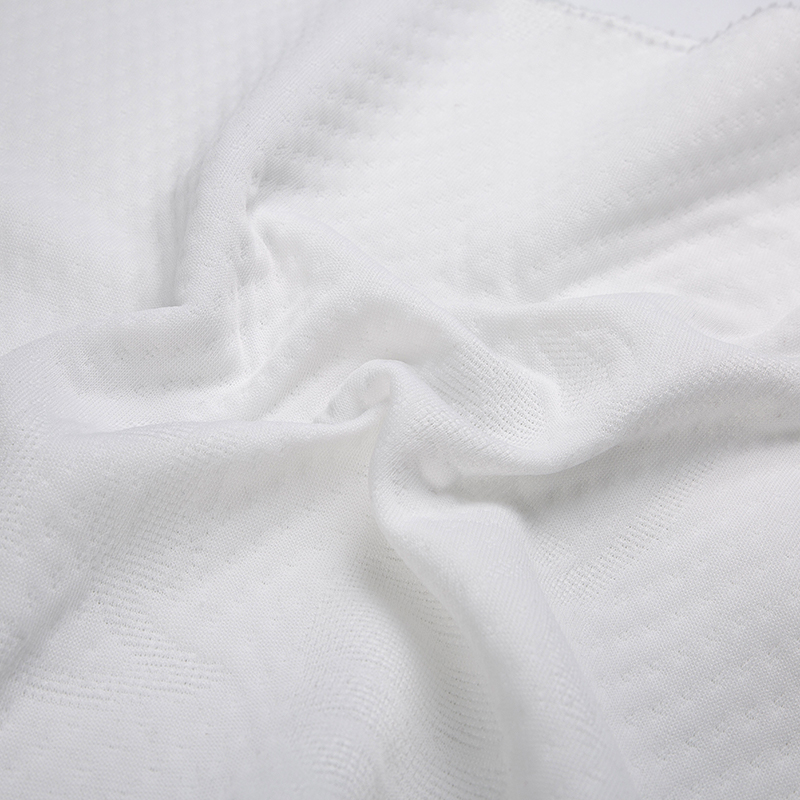Premium quality since 2002!
In today's pursuit of comfortable sleep, a mattress is more than just a tool to support the body; the fabric on its surface plays a vital role. Knitted Mattress Fabric, due to its unique softness, elasticity, and breathability, has become the mainstream choice for modern mattresses. But what materials are used to make this fabric, and how do different materials impact the sleeping experience? This article will give you a detailed look into the material science behind knitted mattress fabric.
1. Synthetic Fibers: The Optimal Choice for Performance and Value
Synthetic fibers are the most common materials used for making knitted mattress fabric, thanks to their excellent performance and cost-effectiveness.
-
Polyester: As the most common choice, polyester is known for its durability, wrinkle resistance, and easy care. It effectively resists stains and mold and is less prone to shrinking. Modern polyester fibers have been technologically improved to mimic the soft feel of natural fibers and enhance breathability, making them a top choice for high-value mattress fabrics.
-
Polypropylene: This fiber is extremely durable and has excellent moisture-wicking properties. While less common than polyester in mattress fabrics, its lightweight and quick-drying characteristics give it potential for use in specific functional mattresses.
2. Natural Fibers: A Return to Comfort and Health
With increasing concern for health and the environment, natural fibers are being used more frequently in the manufacturing of knitted mattress fabric.
-
Cotton: Cotton fiber is highly favored for its natural softness, skin-friendliness, and excellent breathability. It effectively absorbs moisture, keeping the sleeping environment dry and comfortable. However, pure cotton fabric is more prone to wrinkling than synthetic fibers and is slightly less durable. Therefore, many Knitted Mattress Fabrics use a blend of cotton and polyester to balance comfort and durability.
-
Bamboo Fiber: Bamboo fiber is a renewable and eco-friendly material with natural antibacterial, anti-mite properties, and excellent moisture-wicking capabilities. The fabric feels silky to the touch and provides a cooling sensation, making it especially suitable for consumers who need to dissipate heat.
-
Rayon/Viscose: This is a regenerated cellulose fiber made from natural wood pulp, also known as artificial silk. It has a silky-smooth texture and excellent breathability, which helps regulate body temperature and provides a cool sleeping experience.

3. Special Functional Fibers: The Future of Technology-Enabled Fabrics
To meet more personalized needs, some special functional fibers are also incorporated into Knitted Mattress Fabric to add extra value to the mattress.
-
Cooling Fibers: These fibers are usually made from polyethylene or other polymers with high thermal conductivity. They can quickly draw heat away from the body, keeping the fabric surface cool and effectively solving the problem of night sweating.
-
Antimicrobial and Anti-Mite Fibers: By adding silver ions, copper ions, or special compounds to the fibers, these fabrics can inhibit the growth of bacteria and mites, providing a cleaner, healthier sleeping environment for people with allergies.
-
Flame Retardant Fibers: Depending on fire safety standards in different countries and regions, some Knitted Mattress Fabrics will incorporate flame-retardant fibers or undergo flame-retardant treatment to enhance the safety of the mattress.
Summary
From traditional cotton and polyester to the emerging bamboo and functional fibers, the material options for Knitted Mattress Fabric are becoming more diverse. Each material has its unique pros and cons and brings different functional characteristics and sleeping sensations to the mattress. When choosing a mattress, consumers should not only focus on the internal support system but also carefully understand the fabric's material, as a good fabric is key to enhancing the overall sleeping experience. The future of mattress fabrics will continue to integrate with technology to provide us with more comfortable, healthier, and smarter sleep solutions.

 English
English 简体中文
简体中文









